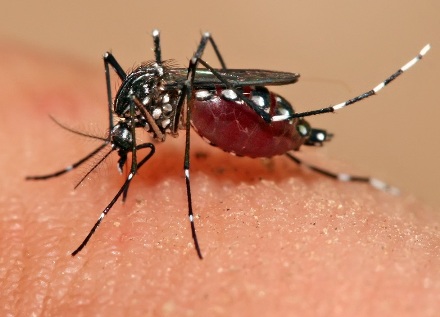In recent weeks the news about a virus known popularly with the name of Zika virus has begun to appear in the majority of media around the world, causing alarm and alert in the town to become an emerging virus at the high number of cases for some time they have been recorded in different countries, even to cause the emergency committee of the wHO (World Health Organization) should meet urgency to treat all information collected so far.
It is true that we are facing an unknown virus so far for the majority of the population, but on which there originally recorded for decades. In fact the virus was first identified in 1947 in Uganda, specifically in the forests of Zika, discovered in a Rhesus Monkey when it carried out a study on the transmission of yellow fever in the jungle.
And in 2007 it caused a major outbreak on the Yap Island and other islands close to the different Federated States of Micronesia, situated to the North of Australia, affecting 8.187 people. While in late 2013 and early 2014 a new outbreak in French Polynesia where 8,264 cases were recorded.
However, it has not been until recently just a few months when begun to have more accurate and alarming news about this infectious disease, mainly due to that in February 2015 the various Brazilian authorities began investigating an outbreak of skin rashes which at that time affected six states located in the northwest region of Brazil.
Shortly thereafter it has already affected 20 countries according to data supplied by the Pan American Health Organization.
What is Zika Virus?
With this name is known to a virus belonging to the Flavivirus genus which is transmitted by the bite of mosquitoes of the Aedes genus, common in both tropical and subtropical areas and transmitted in turn other diseases such as is the case yellow fever, dengue and chikungunya. That is, it is transmitted by the same mosquito that causes dengue, the Aedes aegypti mosquito.
Therefore it is a viral disease also related to other similar or related diseases, such as the West Nile fever or yellow fever at the same time which are also relayed by other mosquitoes belonging to the same genus.
In humans these mosquito bites cause known as Zika virus, which is also known by the names of Zika disease or Zika fever.
How is it transmitted?
The Zika virus is caused and transmitted through the bite of a mosquito. However identified cases where the virus is transmitted sexually, since it tends to remain in the man’s sperm for a long time, perinatal form (i.e., from mother to fetus) and by blood. Just it does not spread through breastfeeding.
The incubation period ranges from 3 to 12 days approximately.
Zika virus symptoms
The main concern of health authorities come from the hand that, in reality, the vast majority of people infected with the virus do not develop symptoms. In fact, after the incubation period of the virus two things can happen: the symptoms or infection present as an asymptomatic form, which means it do not produce clinical manifestations, becoming its diagnosis much more complicated and difficult.
When symptoms appear, it tends to last between 4 and 7 days, and arise the following clinical manifestations:
- Red spots on the skin (rashes). It usually start in the face until then spread throughout the body.
- Intermittent fever less than 39° C.
- Headache.
- Muscle and joint pain.
- Swelling especially in hands and feet.
There are also less common symptoms, such as:
- Edema (swelling) in the hands and feet.
- Lack of appetite.
- Sore throat.
- Abdominal pain.
- Vomiting and diarrhea.
What is the Zika virus treatment?
So far there is no medical treatment for the disease. As is the case with ebola, only tend to treat the symptoms, which can be controlled with the administration of paracetamol or dipyrone in order to treat fever and pain (muscle, joint, head, throat or abdominal).
The antihistamine drugs may be useful in the case of itchy skin rashes, while the other hand is not advisable to use anti-inflammatory drugs such as is the case of acetylsalicylic acid, at increased in the risk of hemorrhagic complications.
Zika virus and the risk that occur microcephaly in infants of infected mothers
Although so far didn’t have real evidence, it seems to be a clear relationship between the Zika virus and microcephaly. This evidence was observed after a study that could detect the presence of the virus in blood samples collected from a baby who born with microcephaly, and finally ended up by dying.
